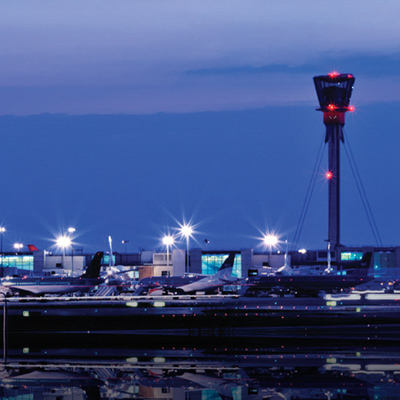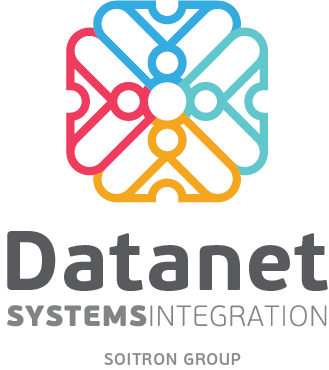Datanet » Clients and references » Telemedicine case study
VODAFONE ROMANIA - UNIQUE TELEMEDICINE SOLUTION
TELEMEDICINE CASE STUDY - VISION
The Clinical Emergency Hospital for Children “M.S. Curie” currently holds the most modern Newborn Intensive Care Unit in Southeastern Europe. The construction of new wards and modern technology required a total investment of 2.165 million euros, supported by the Vodafone Foundation (1.4 million), Children’s Heart Association (615 000 euros) and funds from “MS Curie” Hospital (150 thousand euros). The presented telemedicine system was funded by the Vodafone Romania Foundation.
In order to permanently improve the medical act quality, following the initiative of the head of the Newborn Intensive Care Unit, dr. Cătălin Cîrstoveanu, Datanet Systems created and developed a unique telemedicine solution through the singularity of the designed architecture.
The need for this solution appeared as a result of multiple critical situations that the doctors from the Newborn Intensive Care Unit have to deal with. On one hand, it is about their need of having advanced means of communication which allow them fast consultation in conditions of guaranteed quality of transmission – of specialized physicians who either are not in the hospital or in the country, in a specific case. The case should be presented to interlocutors with live images of the patient, monitoring data transmitted in real-time and specific medical documents. On the other hand, there was a need for a system able to assure the permanent video surveillance of patients and the monitoring of medical staff activity. (reference project)
MIX OF TECHNOLOGIES
ADVANCED TECHNICAL CAPABILITIES
IMPLEMENTATION PROCESS
PROJECT'S BENEFITS
DIRECTIONS OF EXPANSION
MIX OF TECHNOLOGIES
MIX OF TECHNOLOGIES
The solution developed and implemented at the “M.S. Curie” Clinical Emergency Hospital for Children by Vodafone Romania and Datanet Systems, is based on a mix of audio-video technologies, combined so that they COULD meet the specific requirements of intensive care units.
Datanet Systems specialists have created a solution which includes:
- a video surveillance system which records 24/7 everything that takes place in the rooms of Newborn Intensive Care Unit, recordings which are archived for a definite period of time in the storage system of the hospital;
- a telepresence system that allows doctors to get in touch with medical staff from outside the hospital, who are either in Romania or abroad. A doctor from outside the hospital can intervene and supervise the medical act, having access in real-time to the data provided by the patient monitoring equipment.
The solution allows the integration of data provided by the monitoring devices and connection and communication with various medical equipment – radiology, echography, etc. -, by facilitating the fast access and visualization of desired information.
ADVANCED TECHNICAL CAPABILITIES
ADVANCED TECHNICAL CAPABILITIES
The telemedicine solution implemented by Datanet Systems at the “M.S. Curie” Clinical Emergency Hospital for Children represents a first achievement of its kind both by the way in which the capabilities of the two technologies were combined and harmonized, to optimally cover the specific requirements of the medical act and also by the fact that it was fully made with Cisco technologies and equipment.
Architecture and technical capabilities of the system
The telepresence system is based on a Cisco Unified Communications architecture, whose central elements are Cisco Unified Communication Manager (having a control and signaling role) and Cisco Unified Presence (offers access to information of presence, availability and chat). The system assures the realization of videoconferences through Cisco Telepresence Server, which can host conferences with many participants, offering a HD quality of the image. The terminals used, Cisco DX80, have HD touch screens (diagonal 23 inches), HD video cameras and Wi-Fi connectivity and enable the connection of medical equipment (for the purpose of transmitting the images provided by this equipment throughout the video call).
Each room is video and audio monitored by the Cisco Video Surveillance Manager (VSM) system, which receives live image and sound from IP Cisco 6930 mobile surveillance cameras, equipped with movement sensors and optimized for night streaming. The captured HD sounds and images are stored on the servers of VSM system for a definite period and the users can have access at any moment to the live image or the images stored on the server. The system architecture is redundant, to ensure the availability and integrity of data in case of failure.
In addition, each room is equipped with codecs that take the image from any type of video source from the premises (such as the equipment which monitors the vital signs of the patient) and transmit it to the VSM server.
The telepresence system and the video surveillance one can be accessed by doctors from mobile terminals (smartphone and/or tablet), from anywhere by the use of a encrypted connection. The hospital benefits from Wi-Fi coverage, which allows access to all the functions of the system.
The solution also includes, apart from the equipment installed in the rooms, a telepresence camera truck which can travel autonomously in the perimeter of the Newborn Intensive Care Unit and which allows audio-video transmissions as well as the connection to medical equipment for the secure transmission of patient data.
Under the project implemented at the “M.S. Curie” Clinical Emergency Hospital for Children, Vodafone provided the secure voice and data infrastructure implemented on the new 4G technology, as well as the mobile last generation terminals used by the doctors for permanent monitoring of patients.
Vodafone also provides the 1st level support services through the 24/7 available teams, the escalations of support issues being approached by Datanet Systems, through the appointed center for such matters.
IMPLEMENTATION PROCESS
IMPLEMENTATION PROCESS
“M.S. Curie” Hospital executed the implementation process in several stages. During the first testing stage, the solution was implemented in two rooms, then, following good results that were recorded, the project was extended to nine rooms.
The implementation process required overcoming challenges generated by the need to observe the work safety conditions and specific conditions of hospital environment. The necessary solutions to keep in line with this cuantum of conditions were quickly identified by a common effort of both involved teams.
The project was managed by two project managers, one from Vodafone, who supervised the project in its whole, and the second from Datanet Systems, who assured the timing of the two teams.
Telemedicine case study
PROJECT'S BENEFITS
THE TELEMEDICINE PROJECT BENEFITS
The telemedicine solution implemented by Datanet Systems and Vodafone in Newborn Intensive Care Unit from the “M.S. Curie” Clinical Emergency Hospital for Children has three main categories of beneficiaries.
The main beneficiaries are the patients who, due to the solution, have an extra chance to life. “The main gain offered by the implemented solution consists of increasing the efficiency and proactivity of the medical act and the avoidance of errors. We made a series of major decisions in the ward based on the information provided by the solution and the final objective was the decrease of mortality and morbidity”, dr. Cătălin Cîrstoveanu declares.
The second category of beneficiaries is the medical staff from the Newborn Intensive Care Unit whose activity was optimized by offering advanced communication options, simplification of routine operations (exchange of information at the handover of the call, the remote performance of visits etc.), investigation of incidents and their prevention.
The parents of hospitalized children represent the third category of beneficiaries. The system allows the allocation of a secure account to these parents through which they can access online the video surveillance system, in hourly intervals established in advance, in order to see their children during hospitalization.
Telemedicine case study
DIRECTIONS OF EXPANSION
DIRECTIONS FOR EXPANSION
Currently, the telemedicine solution extends to all 18 rooms of the Newborn Intensive Care Unit.
In parallel, we consider the extension of the compatibility degree of hospital infrastructure, so that the telepresence camera truck could also serve other wards than the Newborn Intensive Care Unit.
The second stage of the project provides the integration of the patient’s electronic record into the solution, which will allow immediate access to his/her full history and to all data provided by the medical equipment. By introducing the electronic record in the system, one aims at the full integration of data covering audio-video components and obtain significant improvements at the level of monitoring, prevention, evaluation, reporting, etc.

“I had a very good collaboration with both companies. I received major support from Vodafone Romania Foundation, and Datanet Systems perfectly blended the surveillance and telepresence technologies in an unitary system which represents an exceptional solution for me.“
Dr. Cătălin Cîrstoveanu, Head of Intensive Newborn Intensive Care Unit from the "M.S. Curie" Clinical Emergency Hospital for Children

“The technical telemedicine solution implemented in the "M.S. Curie" Clinical Emergency Hospital for Children was designed and developed by Datanet Systems based upon specific requirements of the Newborn Intensive Care Unit. Thanks to the competences of our specialists and their expertise gained from other completed projects, we’ve managed to efficiently translate the requirements of the medical team into an unique technological solution customized to the special needs of this field.“
Cornel Chirculete, Solution Architect UC & Contact Center, Datanet Systems

“This project has been a special opportunity to use the Datanet experience of IT systems integrator and its creative spirit to fulfill a set of specific requirements. The project implementation in the specific environment of Clinical Emergency Hospital was a challenge we’ve successfully overcome.“
Dragoș Pârvulescu, Enterprise Account Manager, Datanet Systems

“Within the project realized at "M.S. Curie" Clinical Emergency Hospital for Children, Vodafone Romania Foundation has provided the necessary funding for the acquisition of the video, voice and data secure infrastructure, the next generation mobile devices, as well as level 1 support services through 24/7 available teams.“
Angela Galeţa, Director, Vodafone Romania Foundation




